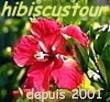-

"hibiscustour", three separate sites -
Islands and lagoons New Caledonia, Polynesia (part). -

Curiosity. Things, amazing, science, society.. -

Ideas perso. Household, Practical life, D.I.Y, Computering..
 
but reality |
  |

|
Flèche faîtière de case de kanala |
War axe but mostly
symbolic ornament pageantry, it marks the rank of the Chief or
other important character. It is also known as the "rain stick"
because during ceremonies, the Chief was symbolically hitting the sun
to make the rain falling.
|
Big feats, woven
hats,handcrat, cricket games for popinées (kanak womean), dances
"pilou pilou" and "bougna" final (stones oven).
|
| The Kanak culture lean
on five elements:
The large hut, the person, spirits, the word, the yam. The large hut: At the centre of the hamlet, at the higher end of a long alley and on a circular hillock which raises it on the ground, the men built the large hut, symbol of the power of the men who are there and signs of alliances with the close countries; it has sculptures at its top (with shells). The entry is decorated with carved panels, the casings. A very high central post out of wooden of houp supports the roof; it is also the image of the chiefs coming out of the forest, place of our origins. On the alley where the significant events of the social life proceed, one plants also sculptures. The word is that of the chief; it is the respect of the commitments which are undertaken, sometimes sealed by the exchange of little gifts and "the Kanak currency" (see below). The yam
; its culture
conditions the first food resource; it demands a significant
work, whose result is celebrated by great festivals during
which all the pageantries and masks are noticed. The
dances
Kanak Currency : the currency kanak seals an agreement: on the islands, it is a vegetable fabric roller containing plants, and on the Main Land, they are shells (and pearls) threaded on wire of hairs of dogfish. |
Photograph
of files : what did they become ? there as everywhere youth
is merry, curious, open. and full of hopes. It is not sure
that the life out of the tribe has been better. Demography is a strong means to gain. The French government thus encouraged the installation of the colonists and the arrival of the metropolitans to compensate. Extracts of the novel of Paul Block, "the Broussard colonist "..the market of exchange between tribes of the shore and tribes of the the mountains : "those brought yams, tarots, dogfish, pigeons, fruits, dried mushrooms, roots of magnagna (aphrodisiac), plaits, fabrics (of banyan), long bands of bark of bourao whose women were rolling up several meters around the kidneys. Those of the edge of sea gave in exchange smoked fish, the shells, lobsters, the turtles, the dried or fumed marine cows. But what made the richness of the men of the mountain, was their trees of kaori, essential to the sailors to build their dugouts. It was an object of great covetousness, often of war. One never gave enough, and some times even, those of the mountain required one or more girls ". |
kanak Revolts
<
There has been a dramatic improvement since I lived there
the first time
and now Kanak females have now true jobs ; Therefore, there is a
priority law for the jobs to be got by kanaks. They
speak with you in the street or shops and seem free to do that
without any complex. Instruction and knowledge of the french surely
explain that.
It can seem a bit abnormal speaking like that now the change is effective but
the past is always vivid for a time. And I tell what I personnally ressent.
|
"Why the Whites work ? Why are they always in a hurry? Why do they take so much sorrow to extract the stones from the mountain and ground which they put in boats? Why so much of effort, concern ? thus one can eat, to shelter and make love, why seek another thing. |
"Kanaks work at the season of the yams with their wives and then they walk, fish, sleep. Does the activity of the Whites prevent them from dying " ? |
WHITE HEARTS Comments : It is wisdom, and one would like to live like in this way, it is true. And however. Why the kanaks did know the famine before the Whites ? Why did they make (also) the war ? Why are they obliged to rebuild boxes which did not last long ? Why do they claim White wealthy properties ? Why do they want Whites's goods ? Why? |
The cannabis grows in Ouvéa but The French cops shut their eyes ; not only in Ouvéa. Rules of the République don' t apply for tribes.

|